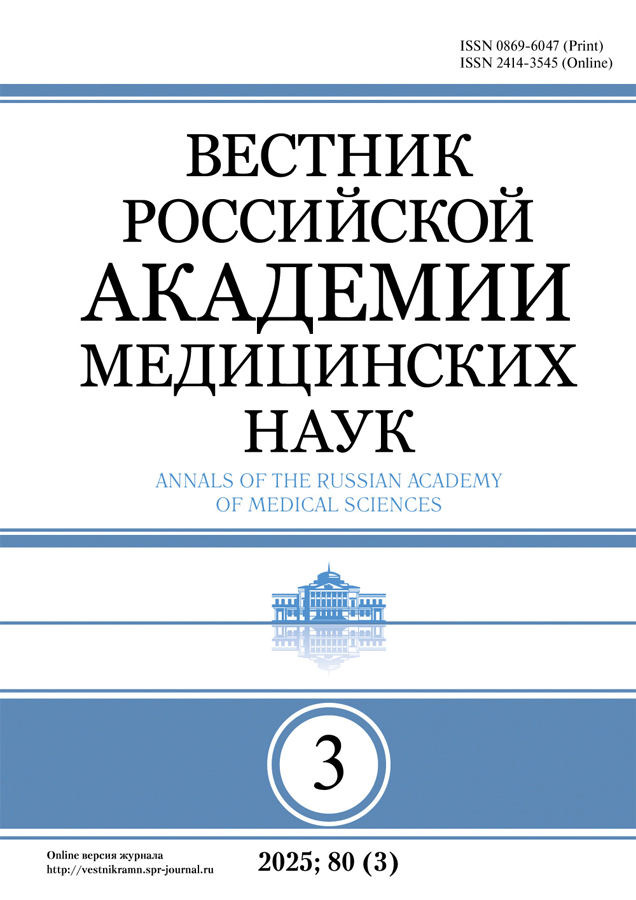FEATURES OF AUTONOMIC RESPONSE IN CHILDREN WITH BRONCHIAL ASTHMA IN THE PERIOD OF EXACERBATION
- Authors: Lebedenko A.A.1, Semernik O.E.1
-
Affiliations:
- Rostov State Medical University, Rostov-on-Don, Russian Federation
- Issue: Vol 70, No 2 (2015)
- Pages: 222-226
- Section: PEDIATRICS: CURRENT ISSUES
- Published: 08.04.2015
- URL: https://vestnikramn.spr-journal.ru/jour/article/view/59
- DOI: https://doi.org/10.15690/vramn.v70i2.1316
- ID: 59
Cite item
Full Text
Abstract
Background: Asthma is one of the urgent problems of modern pediatrics, but neuroregulation mechanisms underlying this disease have not been fully disclosed so far. The autonomic interactions assessment in patients with bronchial asthma is important to understand the pathogenesis and prognosis of the disease. Objective: The aim of the study was to investigate features of autonomic response in children with asthma in the period of exacerbation. Methods: The autonomic nervous system (ANS) of 82 children aged 6 to 18 years old with asthma in the period of exacerbation were investigated. The spectral analysis of the heart rate variability and the correlation rhythmography method (skaterography) were used to assess the ANS state. Investigations were carried out at rest and after clinoorthostatic test. Results: Non-respiratory (slow) waves reflecting the degree of activity of humoral and neural canals of heart rate central regulation were dominated at the spectrogram of 72 (87.80%) children experiencing asthma attack; more than half of patients (58.53%) had predominantly very low-frequency component (VLF%) in the range of fluctuation rate that indicated the influence of neurohumoral regulation. A significant increase in vagosympathetic balance coefficient (LF / HF) was recorded after clinoorthostatic test indicating the activation of the sympathetic nervous system. According to the correlation rhythmography data, a considerable scattering of scattergram points was detected in patients in the baseline state that indicated the predominant influence of parasympathetic nervous system. After the clinoorthostatic test, on the contrary, we observed the «tightness» of the scattergram cloud that could indicate sympathicotonia. Conclusion: The imbalance of the autonomic nervous system in the form of activation of the sympathetic and neurohumoral regulation department was found in children with asthma.
Keywords
About the authors
A. A. Lebedenko
Rostov State Medical University, Rostov-on-Don, Russian Federation
Author for correspondence.
Email: semernick@mail.ru
доктор медицинских наук, заведующий кафедрой детских болезней № 2 РостГМУ
Адрес: 344022, Ростов-на-Дону, Нахичеванский пер., д. 29
O. E. Semernik
Rostov State Medical University, Rostov-on-Don, Russian Federation
Email: semernick@mail.ru
кандидат медицинских наук, ассистент кафедры детских болезней № 2 РостГМУ
Адрес: 344022, Ростов-на-Дону, Нахичеванский пер., д. 29
References
- Chuchalin A.G. Bronkhial'naya astma u detei. Strategiya lecheniya i profilaktika. Natsional'naya programma [Bronchial Asthma in Children. Strategy of Treatment and Prevention. National program]. Moscow, Original-maket, 2012. 184 p.
- Chuchalin A.G. New perspectives in the treatment of asthma. Pul'monologiya = Pulmonology. 2011; 4: 5–11.
- Lebedenko A.A., Semernik O.E. Neurohumoral aspects of acute asthma in children. Pul'monologiya = Pulmonology. 2013;5: 36–39.
- Emin O., Esra G., Aysegül D., Ufuk E., Ayhan S., Rusen D.M. Autonomic nervous system dysfunction and their relationship with disease severity in children with atopic asthma. Res. Physiol. Neurobiol. 2012; 183 (3): 206–210.
- Kumar S., Babbar R., Varshney V.P., Daga M.K., Dalvi V.S. A study of autonomic nervous system status in children of asthmatic parents. Indian J. Physiol. Pharmacol. 2012; 56 (1): 74–79.
- Raemdonck K.J. de Alba, Birrell M.A. Grace M., Maher S.A., Irvin C.G., Fozard J.R., O’Byrne P.M., Belvisi M.G. A role for sensory nerves in the late asthmatic response. Thorax. 2012; 67 (1): 19–25.
- Lebedenko A.A., Semernik O.E., Tarakanova T.D. Spectral analysis of heart rate variability - a new look at the problem of autonomic dysfunction in children with asthma. Meditsinskii vestnik Yuga Rossii = Medical Bulletin of the South of Russia. 2013; 1: 37–41.
- Babunts I.V., Miridzhanyan E.M., Mashaek Yu.A. Azbuka analiza variabel'nosti serdechnogo ritma [ABC Analysis of Heart Rate Variability]. Stavropol, 2002. 112 p.
- Fomina I.G., Makhnach G.K., Zateishchikova D.A. Heart rate variability in patients with bronchial asthma. Kardiovaskulyarnaya terapiya i profilaktika = Cardiovascular therapy and prevention. 2007; 6 (5): 42–45.
- Fomicheva L.Yu. Condition of vegetative regulation in children with severe asthma. Estestvennye i tekhnicheskie nauki = Natural and technical sciences. 2011;6: 193–194.
Supplementary files








